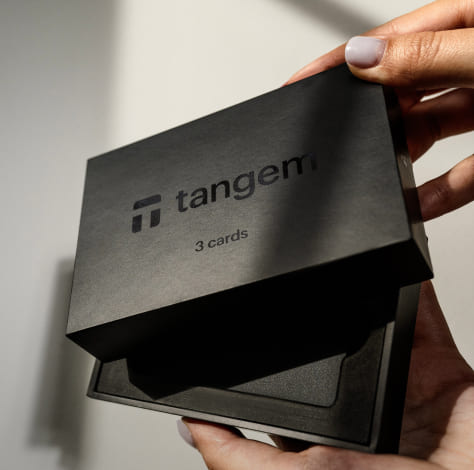It’s vital for crypto holders to regularly update their cold wallet firmware to protect their assets from emerging threats. Outdated firmware can expose wallets to security vulnerabilities that hackers exploit, risking the loss of funds. Implementing best practices such as checking for official updates, keeping the device secure, and ensuring a backup before updates can greatly enhance your wallet’s defenses. By following these guidelines, you can fortify your cold storage against attacks and maintain your cryptocurrency’s safety.
Understanding Cold Wallets
Your cryptocurrency security relies heavily on the use of cold wallets, which are designed to store digital assets offline. These wallets are less susceptible to hacking or online threats, making them a preferred choice for long-term storage of cryptocurrencies. Users can manage their assets without exposing them to potential cyber attacks, thereby enhancing the overall security of their investment.
What is a Cold Wallet?
About cold wallets, they are hardware or paper-based solutions designed to securely store the private keys of your cryptocurrencies without an Internet connection. Unlike hot wallets, which are connected to the web and more vulnerable, cold wallets provide a safe harbor for holding assets. These wallets can range from standalone devices to simple paper printed with your keys, ensuring your digital wealth remains protected.
Types of Cold Wallets
Between hardware cold wallets and paper wallets, various options serve different user needs. Hardware wallets are physical devices that securely store your private keys while offering user-friendly interfaces for transaction management. On the other hand, paper wallets involve writing down keys on paper, offering a highly secure yet less accessible option. Here’s a table that outlines the main types:
| Type | Description |
| Hardware Wallet | Device-based storage with USB connection. |
| Paper Wallet | Physical printout of keys for offline storage. |
| Cold Storage | Environment that keeps keys offline. |
| Multisig Wallet | Requires multiple signatures for transactions. |
| Stealth Wallet | Enhanced privacy features when storing keys. |
Even within cold wallets, options like multisig wallets provide additional layers of security by requiring approvals from multiple users. This enhances safety but can complicate access in urgent situations. Another option is the stealth wallet, which is designed to increase privacy and anonymity while transacting. Here’s a table summarizing these options:
| Feature | Benefit |
| Security | Offline storage reduces hacking risks. |
| Access | Device availability aids convenience. |
| Privacy | Enhanced anonymity through stealth options. |
| Multi-User | Multisig adds safety in transactions. |
| Cost | Paper wallets are budget-friendly alternatives. |
Importance of Firmware Updates
Assuming you want to protect your cryptocurrency investments, regular firmware updates are crucial. These updates serve to address vulnerabilities that may be exploited by hackers, enhancing the overall strength of your cold wallet’s security. Ignoring firmware updates can leave your wallet open to attacks, potentially leading to significant financial losses.
Furthermore, firmware updates can introduce advanced security features that help keep your assets safe. By staying current with the latest updates, users ensure they are benefiting from improved encryption protocols and other protective measures that safeguard their digital currencies against unauthorized access.
Ensuring Security
Any cold wallet user must prioritize security, as even the most advanced hardware is susceptible to exploits if not regularly updated. Firmware updates often patch known vulnerabilities, thus shielding your wallet from the latest threats. In addition, manufacturers routinely improve security algorithms, which can significantly boost your wallet’s defense mechanisms when updates are applied.
Enhancing Functionality
An updated firmware can also enhance the functionality of your cold wallet, introducing new features that improve user experience and convenience. These updates might provide better transaction speeds, increased compatibility with different cryptocurrencies, or even new interfaces that make the wallet easier to navigate.
Also, new functionalities can allow users to integrate their wallet with emerging technologies such as decentralized finance (DeFi) applications, expanding the ways in which they can manage their assets. Making the most of these enhancements can lead to a more efficient and user-friendly experience, ensuring that you not only protect your assets but also interact with them in innovative ways.
Best Practices for Firmware Updates
Now, staying proactive with firmware updates is crucial for maintaining the security of your cold wallet. Cyber threats are constantly evolving, and manufacturers often release updates to patch vulnerabilities that could expose your crypto assets to attacks. Implementing a regular update schedule ensures that your wallet remains fortified against potential exploits. Schedule updates at consistent intervals, or subscribe to notifications from the manufacturer to stay informed about new releases.
Regular Update Schedule
Below, it’s advisable to incorporate firmware updates into your regular cryptocurrency maintenance routine. Skipping updates might leave your wallet susceptible to specific vulnerabilities that hackers could exploit. By establishing a routine, you reinforce the security of your storage solution and lessen the chances of falling victim to a breach caused by outdated firmware.
Verifying Source Integrity
Verifying the integrity of the firmware source is vital to preventing malicious attacks. Before proceeding with any update, always ensure that the firmware you download is directly from the manufacturer’s official website or trusted sources. Using unofficial or third-party links increases the risk of downloading compromised software that could lead to the theft of your assets. Always cross-reference version numbers and check for digital signatures if available.
Verifying the source not only minimizes risks but also protects your cryptocurrency investments. With cyber threats becoming increasingly sophisticated, malicious actors may attempt to mimic legitimate updates to gain access to your wallet. By taking the time to confirm that the update originates from a reputable source, you significantly reduce the chance of introducing vulnerabilities or falling prey to scams that could compromise your holdings.
Backup and Recovery Procedures
Not having a backup plan for your cold wallet can lead to devastating outcomes in case of device failure or loss. Backups serve as safety nets that protect your crypto investments against unforeseen events. Regularly updating your backup ensures that your stored data reflects any recent transactions and changes, thereby minimizing potential losses.
Importance of Backups
Before implementing any firmware updates, it’s vital to create a comprehensive backup of your wallet. This practice protects not only the cryptographic keys but also your transaction history and wallet settings. A well-structured backup allows you to quickly restore your assets, ensuring that a technical mishap doesn’t block your access to funds.
Recovery Steps
Across various cold wallet models, the recovery process generally follows a standard format, enabling users to reclaim their assets. Users typically begin by selecting the option to restore from backup during the initial setup of the wallet. After entering the recovery phrase, they must follow prompts to complete the setup and regain access to their funds.
Recovery involves carefully following the instructions provided by your cold wallet’s manufacturer. It’s vital to enter the recovery phrase accurately to avoid complications. Additionally, ensure that the wallet’s firmware is up to date prior to recovery to optimize security features and minimize risks. Understanding the correct methods and tools enhances the success rate of the recovery process, ensuring that your crypto remains safe throughout.
Risk Management
All cryptocurrency users must prioritize risk management to protect their investments effectively. A comprehensive approach to risk management involves identifying potential threats, implementing mitigation strategies, and continuously monitoring the security landscape. By taking proactive measures, users can safeguard their assets and enhance the resilience of their cold wallet systems.
Identifying Potential Threats
After assessing the security environment, users should focus on identifying potential threats that could compromise their cold wallets. Typical threats include malicious software, physical theft, and social engineering attacks. Users need to stay informed about evolving threats, ensuring that they understand how these attack vectors can exploit vulnerabilities in firmware and hardware systems.
Mitigation Strategies
Above all, users must implement robust mitigation strategies to counteract identified threats. This involves regularly updating firmware to close security gaps and utilizing strong, unique passwords for added protection. Additionally, users should employ multi-factor authentication, conduct thorough security audits, and maintain rigorous backup protocols to ensure data integrity.
Management of mitigation strategies requires ongoing education and vigilance. Users should participate in community discussions, monitor security news, and leverage the knowledge of experts to stay ahead of threats. Establishing a routine for firmware updates and security checks fortifies the defense mechanisms, allowing users to respond swiftly to emerging risks and keeping their cryptocurrency secure.
Community and Support Resources
Unlike traditional wallets, cold wallets often require firmware updates to maintain their security and functionality. Engaging with community and support resources can significantly enhance your understanding of these updates. These resources not only provide insights but also serve as a platform for sharing experiences, troubleshooting, and learning from others in the cryptocurrency space. The active participation of users can lead to the discovery of best practices and security measures that can help protect your assets.
Forums and Groups
Community forums and social media groups dedicated to cryptocurrency are invaluable for obtaining firsthand information about firmware updates. Users share their experiences regarding various cold wallets, including potential vulnerabilities and successful upgrade stories. This exchange can alert you to possible risks associated with specific updates or variations in processes. Engaging in dialogue within these spaces fosters a culture of support and shared learning, ensuring you’re not navigating these waters alone.
Official Documentation
After selecting a cold wallet, it is vital to consult the official documentation provided by the wallet manufacturer. These documents typically contain comprehensive details on performing firmware updates safely and effectively. Not only do they outline necessary procedures, but they also highlight any known issues or common mistakes that users might encounter. Following official guidelines can significantly reduce your exposure to risks during the update process.
Groups focused on official documentation can often assist in clarifying complex aspects of the procedures outlined. By engaging with these communities, users can often find answers to specific queries and discuss their interpretations of the instructions. This collaborative approach ensures that any updates performed are based on accurate information and conducted in accordance with the latest security measures, minimizing the risk of loss or compromise.
Final Words
From above, it is evident that regularly updating the firmware of cold wallets plays a significant role in maintaining the security of cryptocurrency holdings. Adhering to reliable practices, such as verifying the source of updates and ensuring devices are free from malware, can mitigate various cyber threats. This proactive approach enhances the overall security framework that protects digital assets against potential vulnerabilities.
By integrating firmware updates as a standard procedure in crypto management, users can significantly reduce the likelihood of unauthorized access and ensure their investments remain safeguarded. Staying informed about best practices and adhering to them will bolster the security measures that support confidence in storing cryptocurrencies offline.







